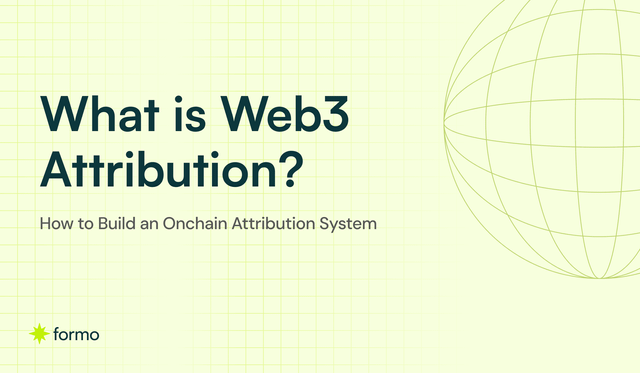What is Web3 Attribution? How to Build an Onchain Attribution System

 |
User acquisition is one of the biggest problems in crypto. For an app to succeed, it must have sustainable unit economics when it comes to user acquisition. The lifetime revenue of a user (LTV) should be greater than the cost to acquire them (CAC) at a healthy multiple. Therefore, understanding how your web3 marketing efforts translate to onchain conversions, volume, and TVL is crucial for sustainable growth onchain. Without accurate attribution, you are lost in the dark forest. Onchain attribution connects user touchpoints across both Web2 and Web3 touchpoints. It tracks the complete user journey from initial discovery through final onchain conversion, using wallet addresses as persistent identifiers. Web3 Attribution helps answer key questions:
However, there are many challenges in getting attribution right. Web3 users use multiple wallets on multiple chains. Traditional analytics tools miss critical onchain actions. Marketing campaigns span Twitter, Discord, websites, quest platforms, and smart contracts—all disconnected from each other. Most importantly, onchain data reveals what happened, but not the context behind why users took specific actions. This comprehensive guide explores how to build effective Web3 attribution systems that deliver measurable results for onchain apps and protocols. submitted by /u/yosriady |